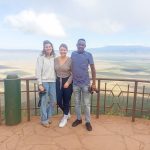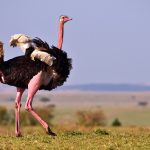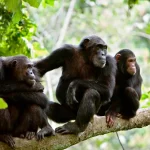
- Kilimanjaro Climb Preparation: How To Prepare?
-
Written by : Tarimo Expeditions
Embarking on a Kilimanjaro climb is a thrilling and challenging adventure that requires meticulous preparation. To conquer the highest peak in Africa, you need to be physically and mentally prepared, equipped with the right gear, and well-versed in the intricacies of the climb. In this guide, we’ll walk you through the step-by-step process of Kilimanjaro climb preparation, covering everything from training and gear selection to altitude acclimatization and safety measures.
Kilimanjaro Climb Preparation: How To Prepare?
Before you set out on your journey to the roof of Africa, it’s crucial to be fully equipped with the necessary knowledge and resources. Below, we’ve outlined a comprehensive guide to help you prepare for your Kilimanjaro climb:
Choosing the Right Time to Climb
Embarking on a Kilimanjaro climb requires careful consideration of the timing. Optimal climbing seasons are during the dry months, which are typically January to mid-March and June to October. These months offer clear skies and pleasant temperatures, increasing your chances of a successful summit.
Selecting the Ideal Route
Kilimanjaro offers several routes to the summit, each with its own challenges and attractions. The Marangu Route is often referred to as the “Coca-Cola” route due to its popularity and hut accommodations. The Machame Route, known as the “Whiskey” route, is famed for its diverse landscapes. The Lemosho Route provides a longer ascent for better acclimatization. The Rongai Route offers a unique approach from the north, and the Northern Circuit Route is the longest and most scenic.
Physical Fitness and Training
To ensure a smooth climb, physical fitness is paramount. Cardiovascular conditioning, strength training, and endurance exercises should be a part of your regular routine. Incorporate activities like hiking, running, and stair climbing to build the necessary stamina for the climb.
Acquiring the Essential Gear
Packing the right gear is essential for a comfortable and safe ascent. Layered clothing, moisture-wicking base layers, insulated jackets, waterproof pants, and sturdy hiking boots are among the must-have items. Don’t forget essential accessories like hats, gloves, sunglasses, and trekking poles.
Altitude Acclimatization
Climbing gradually is crucial for acclimatization and reducing the risk of altitude sickness. Stay hydrated by drinking plenty of water and maintaining a balanced diet. Give your body time to adjust to the changing altitudes.
Mental Preparation
Mental strength plays a vital role in a successful Kilimanjaro climb. Maintain a positive mindset and be prepared to face challenges. Visualization techniques, mindfulness, and mental exercises can help you stay focused and motivated throughout the journey.
Travel Arrangements
Planning your travel logistics in advance is essential. Book your flights early and make arrangements for airport transfers and accommodation before and after the climb. Choose a reputable tour operator for a well-organized experience.
Safety Measures
Prioritize safety by packing a comprehensive first aid kit, including medications for common altitude-related ailments. Stay connected with communication devices and follow the guidance of experienced guides and porters.
Environmental Responsibility
Respect the pristine environment of Kilimanjaro by following the principles of “Leave No Trace.” Dispose of waste responsibly and adhere to local customs and guidelines to preserve the mountain’s beauty for future generations.
Preparing for Summit Night
Summit night is the highlight of the climb. Layer up to combat the freezing temperatures, maintain proper nutrition and hydration, and stay mentally focused on reaching the peak. Remember, the sunrise at Uhuru Peak is a breathtaking reward for your efforts.
Capturing Memories
Document your Kilimanjaro adventure through photographs and journaling. Capture the stunning landscapes, the camaraderie with fellow climbers, and the sense of accomplishment at the summit.
FAQs
Is previous climbing experience necessary?
No, previous climbing experience is not mandatory. However, a good level of physical fitness and mental preparation is essential.
How long does it take to climb Kilimanjaro?
The duration varies based on the route chosen. It typically takes around 5-8 days to complete the climb.
What is altitude sickness and how to prevent it?
Altitude sickness is caused by reduced oxygen levels at high altitudes. Gradual ascent, proper hydration, and acclimatization are key to preventing it.
Can I climb Kilimanjaro solo?
While it’s possible, climbing with a reputable tour operator, guides, and porters enhances safety and the overall experience.
Are guides and porters necessary?
Yes, guides and porters are highly recommended. They provide support, and valuable insights, and help carry equipment, allowing you to focus on the climb.
What is the success rate of summiting Kilimanjaro?
The success rate varies by route but is generally around 60-70%. Proper preparation, acclimatization, and determination play a significant role in achieving the summit.
Conclusion
Embarking on a Kilimanjaro climb is a remarkable adventure that requires dedication, preparation and a spirit of adventure. By following this comprehensive guide, you’ll be well-equipped to tackle the challenges and savor the triumphs of reaching Uhuru Peak. Remember, Kilimanjaro awaits—prepare wisely, climb confidently, and make memories that will last a lifetime.
Best of Our Tanzania Safaris
From the Wildebeest Migration to the Big 5 and Tropical White Sand Beaches
Explore the best of Tanzania with our curated collection of safaris packages. Experience breathtaking wildlife, stunning landscapes and cultural richness, there’s something for everyone.



